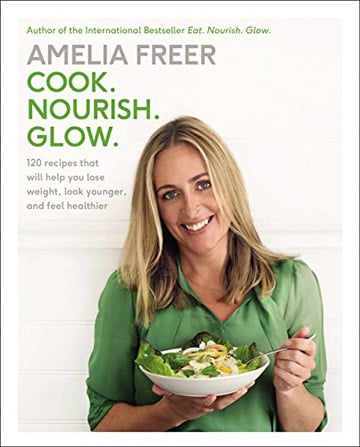
Want to Save This?
Knowing how to freeze that abundance of herbs from the garden (or last weekend’s trip to the grocery store) is a little like being able to summon a spell. Simply plop the herbs in an ice cube tray and fill them with oil. That’s it. Unlike drying herbs, freezing herbs retains all the vibrancy in terms of both taste and color. Weeks or months later, when you’re ready to impart some summer herb awesomeness to anything—soups, stews, sides, fish, omelets, cooked vegetables, and so on—simply take a cube and gently warm it in a skillet.–Renee Schettler
Freeze Frame

How to Freeze Herbs
Equipment
- Ice cube tray
Ingredients
- Fresh herbs (basil, thyme, tarragon, cilantro, dill, chives, rosemary, oregano, sage, or anything else)
- Olive oil or coconut oil (or substitute butter or ghee that has been melted and slightly cooled)
Instructions
- Keep the herbs whole or roughly chop them, it’s up to you. Place a small amount of one herb or a mixture of herbs into each indentation in your ice cube tray.
- Pour enough olive oil (or melted coconut oil, ghee, or butter) into each indentation to almost fill it. Place in the freezer for several hours or overnight.
- When the oil is frozen, remove the cubes from the trays, place them in a resealable plastic bag, label each bag with the type of herb using a Sharpie, and toss the bag in the freezer for up to several months. Pull out a cube or two whenever a little oil and fresh herbaceousness is desired, whether you're making sauces, soups, stews, braises, pan sauces, even eggs. And if all you need is a smidgen of green goodness rather than an entire cube, simply grab a knife and slice as little or as much off as you need.
Notes
How To Freeze Aromatics variation
Citrus zest, grated ginger and fresh chili also work really well when preserved using this method, so get creative and make up some interesting mixes. Just remember to label the bags.How To Freeze Herbs & Aromatics In Water variation
Follow the recipe above, using cold water in place of oil. Plop the resulting ice cubes in cocktails, soda, or water.
Nutrition
Nutrition information is automatically calculated, so should only be used as an approximation.
Recipe Testers’ Reviews
This is a super quick way of storing herbs from the summer to use later when fresh herbs are not easily available. It adds much more flavor than dried herbs and takes the same amount of work.
I chopped some fresh thyme and sage, added 1 1/2 tablespoons olive oil to my ice cube tray, popped the tray in the freezer overnight, and had herbs ready to use for stews and sauces.
Freezing herbs is an excellent way to preserve their freshness and vibrant taste. I often do this with fresh herbs as the bunches I get at the farmer’s markets or stores are more than can be used in a week or 10 days. I have used these types of cubes in the past for pasta sauces, melting over grilled meats, in soup, rice dishes, to sauté various vegetables and meats, and stir-fries.
I made the following:
2 wells with chopped basil and extra virgin olive oil.
2 wells with chopped basil and a lemon-infused olive oil.
2 wells with the tips of the basil plants (tiny whole leaves) and regular olive oil.
2 wells with chopped cilantro and a chili-infused olive oil
2 wells with chopped cilantro and regular olive oil
2 wells with chopped basil chopped thyme, chopped parsley, and melted butter.
2 wells with chopped rosemary, chopped thyme, minced green onion, and melted butter.
2 wells with chopped rosemary, chopped thyme, and extra virgin olive oil.
2 wells with chopped rosemary, chopped thyme, minced green onion, and melted coconut oil.
2 wells with chopped dill, minced garlic and olive oil.
2 wells with chopped thyme, cilantro, parsley, minced green onion, grated ginger, and sesame oil.
2 wells with chopped parsley and melted butter.
2 wells with lemon zest, minced garlic, chopped cilantro, chopped parsley, grated ginger, and melted coconut oil.
And finally 2 wells with chopped tarragon and melted butter.
I am particularly fond of the tarragon and butter for cooking my weekend breakfast eggs. I find if one cube is too much, it is quite easy to slice a bit off. In a hot pan, the cubes take only a couple minutes to melt and release their flavor.
My test of this wonderfully simple preservation method was a rousing success with the herbs I had on hand as leftovers from recent cooking. I used thyme and rosemary, separately, and I used olive oil. I made the recipe at night and froze until the next evening. I then placed the thyme cubes in one plastic bag and the rosemary in another.
I made a simple dip for ciabatta bread by heating the frozen cubes and allowing the herbs to infuse the oil, then dipping a nice crusty bread into the herby oil. This method keeps the herbs as fresh and as flavorful as I’d hoped! The taste was clean and the texture was also excellent.
I did add one more step into the instructions. Once I had filled the ice cube trays, I felt I wanted a cover atop them, so I draped plastic wrap on the ice cube tray before placing it into the freezer. I look forward to experimenting with this more, especially as summer brings a wide variety of herbs at their peak, and this technique not only allows them to be preserved for later, which is a big plus, but also prevents the inevitable waste that occurs when you buy a bunch of an herb needed for a recipe, make the recipe, and then have all but the little bit used for that one sole purpose languishing in the fridge till it’s past its prime.
I’ve always loved the idea of preserving fresh herbs in the freezer when you have too much or you want to utilize what’s in season. While I always prefer to have pots of fresh herbs available on my counter, this is an easy alternative.
Not wanting to overflow my freezer with various herb butter, I decided to try it with just one herb but in different liquids. So I used my most commonly utilized herb, sage, and created cubes of olive oil, coconut oil, chicken stock, and ghee. I labeled them in their bags and have so far use the olive oil and chicken stock ones. Because I used them in hot dishes or pans it took no time for them to come back to their liquid state.
I’ve always thought of air- or oven-drying my extra fresh herbs, but sometimes they just get tossed due to lack of time. I never once thought that I could quickly freeze herbs in oil with good results until now. I was shocked that the herbs stayed a beautiful vibrant green even after freezing.
I used thyme and preserved the long stems by loosely coiling them around the edge of the espresso cup I used to freeze it in. (I didn’t have an ice cube tray handy.) I made one mistake and used sunflower oil instead of coconut oil or olive oil and the sunflower oil froze to a clear jelly-like substance instead of hard like an ice cube. I’d definitely use the recommend oils if you want to store these for a length of time.
Freezing herbs in whatever fat vehicle you’d normally use them with is part genius and part just good common sense. I love that this recipe harnesses both! This is extremely convenient and allows you to parcel out a tiny bit of the work ahead of time so that adding another level of flavor to a dish is a quick and easy thing to achieve.
I grow some fresh herbs at home, but others I buy from the store—this is a fantastic way to use up what I’d normally let languish in the fridge. Mine weren’t frozen terribly long but when I did use them, they were still beautiful and fresh tasting. I froze mine in olive oil and butter. I did basil-olive oil; dill-butter; chive-butter; and rosemary-olive oil. The combinations truly are endless!
I used the dill-butter cubes in steamed carrots. AMAZING. I didn’t let it thaw, just tossed it in the pot with the carrots when they were done cooking, left it over low heat, and covered it to let it melt. I used the basil-olive oil cubes on grilled asparagus. That took about 5 minutes to thaw, but I was outside, next to the grill, on a warm day in the sun. If I were indoors, I’d give it about 30 minutes before using (though it might still be cloudy).













Love freezing my garden herbs this way! So nice to have herbs easy to grab and ready to use!
Thanks, Krista! We couldn’t agree more.
Can i use vegetable oil? Or canola oil?
Any neutral oil should be fine, Lisa.
Thanks. Can i store in the refrigerator and not freeze?
You can refrigerate them but only for a matter of days. Freezing them gives them much more longevity.